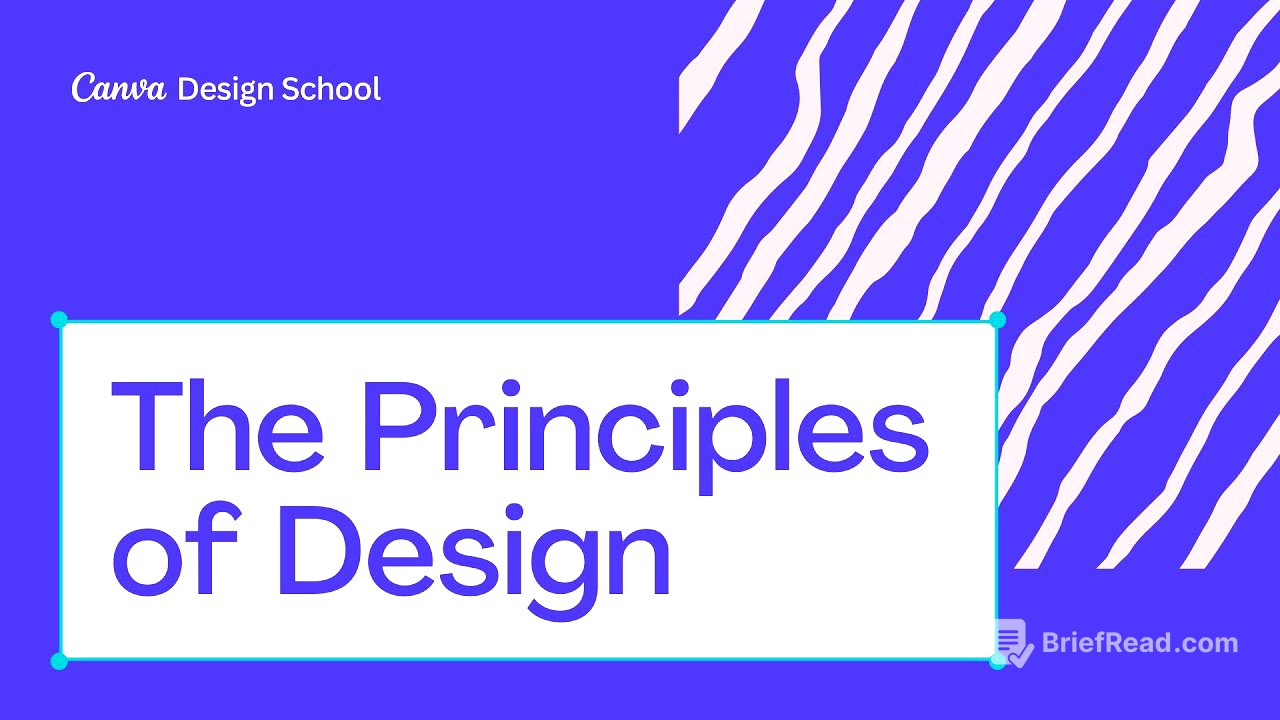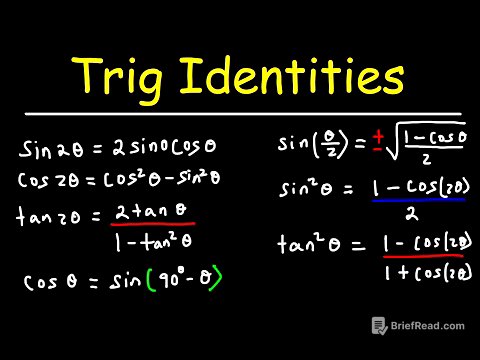TLDR;
This video introduces fundamental design principles to enhance creative confidence. It covers emphasis, contrast, white space, movement, repetition, proportion, balance (symmetrical and asymmetrical), and alignment. Each principle is explained with examples to show how they contribute to effective and visually appealing designs.
- Emphasis is achieved through contrast, movement, and white space.
- Balance can be symmetrical for security or asymmetrical for dynamic interest.
- Alignment provides structure and order, making designs look professional.
Introduction to Design Principles [0:05]
The video introduces the basic design elements such as lines, shapes, form, text and color, and how to effectively combine them. It emphasizes the importance of understanding key design principles to create designs with confidence. The lesson will cover principles that help in making design choices.
Emphasis and Contrast [0:27]
Emphasis is the focal point of a design, achieved by making an element stand out through size, boldness, or brightness. Contrast, a fundamental aspect of emphasis, involves using differences between elements like colors, textures, and lines to create visual interest. For example, contrasting dark and light colors or thick and thin lines can highlight important information, such as using bold, bright text against a dark background.
White Space [2:10]
White space refers to the area in a design not occupied by elements like text or images. Despite its name, white space doesn't have to be white; it's about creating empty patches to give the design breathing room. It prevents overcrowding, improves legibility, and adds emphasis by drawing attention to specific elements.
Movement [3:14]
Movement in design refers to how the eyes scan the page, guided by lines and colors from one element to the next. Designers use shapes and contrasting colors to direct the viewer's gaze in a specific order. This technique can create a sense of motion, even in a still image, by strategically placing elements to lead the eye.
Repetition [4:22]
Repetition involves reusing elements to create consistency, patterns, or emphasize a message. Patterns can add texture or serve as a background, while repeating text can maintain a minimal design, focusing attention on the message through subtle elements like color and space. Repetition also introduces rhythm, providing a visual beat that structures the design.
Proportion [5:13]
Proportion relates to the size and quantity of elements and how they relate to each other, ensuring a design doesn't feel lopsided or off-balance. Elements should be appropriately sized relative to each other to maintain a harmonious composition.
Balance [5:50]
Balance is how objects are positioned within a design, considering the "weight" of each element, including white space. Symmetrical balance provides a sense of security and structure, while asymmetrical balance, achieved with differently weighted elements, adds dynamic interest. Unbalanced designs can be used intentionally to create unease.
Alignment [7:30]
Alignment focuses on the relationships between elements, providing structure and order through edge or center alignment. Edge alignment aligns objects to the left, right, top, or bottom, while center alignment aligns them to the middle. Proper alignment is crucial for a professional, finished look, as misaligned elements can make a design appear random and unplanned.
Review of Design Principles [8:39]
The video concludes with a review of the design principles discussed: emphasis, contrast, white space, movement, repetition, proportion, balance, and alignment. It encourages viewers to practice these principles in their designs to internalize them.









